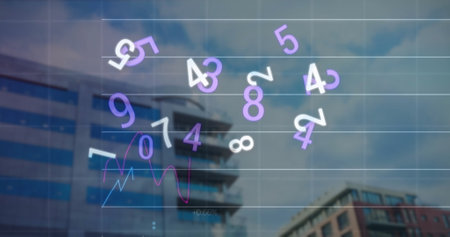Introduction to Grah and Their Cultural Importance in India
In the vast and intricate landscape of Indian culture, the concept of Grah, or planets, holds a central position, especially within the framework of Vedic Astrology. Known as “Navagraha”—the nine celestial influencers—these planets are believed to guide human destiny and impact every facet of life, including ones career trajectory. The importance of Grah is deeply ingrained in Indian traditions, rituals, and even everyday conversations. Phrases like “Shani is troubling me” or “Budh is favouring my business” reflect how astrological beliefs are seamlessly woven into the cultural fabric. In Indian society, planetary changes or “Grah Parivartan” are not just astrological events but are perceived as turning points that can bring about significant shifts in professional life and personal growth. Understanding the role and symbolism of each Grah provides crucial insight into why millions of Indians consult astrologers for career advice at various stages of their lives. This foundational belief system sets the context for analysing how changes in planetary positions influence career progression according to Indian astrology.
Stages of Career as Understood in Indian Context
In the Indian socio-economic context, career progression is deeply influenced by traditional values, family expectations, and the evolving aspirations of the younger generation. Unlike some Western models that emphasise individualism, Indian career stages are often intertwined with collective family goals and societal benchmarks. Understanding these stages is crucial when analysing the effect of Grah (planetary) changes on ones professional journey through the lens of Indian astrology.
Commonly Recognised Career Stages in India
| Stage | Indian Term/Expression | Typical Age Range | Cultural Expectations & Aspirations |
|---|---|---|---|
| Education & Skill Building | Shiksha Avadhi / Vidya Arambh | 15-24 years | Focus on academic achievement, selection of streams (Science, Commerce, Arts), entrance exams for engineering, medical, or government services; high parental involvement. |
| Entry-level Employment | Naukri Ki Shuruaat / Pehli Naukri | 22-28 years | Securing first job through campus placements or competitive exams; preference for government jobs (Sarkari Naukri) due to job security and social prestige. |
| Career Consolidation & Growth | Karyakshetra Mein Pragati / Tarakki Ka Samay | 28-40 years | Aim for promotions, salary increments; often involves job switching for better prospects; marriage and family responsibilities influence decisions. |
| Mid-Career Reflection & Diversification | Madhya Kaal / Punarvichar Avadhi | 40-50 years | Pursuit of stability versus entrepreneurial ventures; children’s education becomes a priority; concern for work-life balance emerges strongly. |
| Pre-Retirement & Legacy Planning | Sanyas Avadhi / Viram Ki Ore | 50-60+ years | Focus shifts to retirement benefits, property acquisition, wealth transfer to next generation; desire for social respect and community engagement increases. |
The Role of Socio-Economic Realities in Career Decisions
The above stages reflect not just an individuals growth but also broader trends such as urbanisation, rise of the service sector, and the continued importance of government positions. In many families, career choices are influenced by astrology, with parents consulting astrologers about auspicious timings (Muhurta) for key milestones like starting a new job or business. The progression from education to legacy planning is seen through both pragmatic and spiritual lenses, making it essential to analyse how shifting Grah positions may impact each phase uniquely within the Indian framework.

3. Understanding Grah Changes: Dasha, Gochar, and Transits
In Indian astrology, the influence of Grah (planets) on an individual’s career is intricately linked to the concepts of Dasha systems, planetary transits (Gochar), and their interpretation in local parlance. These astrological mechanisms are at the core of predictive astrology in Bharat and provide a framework for understanding how planetary movements can impact one’s professional journey.
Dasha Systems: The Timekeepers of Destiny
The Dasha system, particularly the Vimshottari Dasha, is a unique timing method used in Vedic astrology to divide an individual’s life into periods ruled by different planets. Each Mahadasha and Antardasha brings its own flavour to career prospects. For example, during Shani Mahadasha (Saturn period), many people experience significant changes or challenges at work, often described locally as “karma ka samay” (time for hard work and responsibility). The way Dashas unfold is deeply embedded in Indian astrological consultations, where astrologers advise on job switches, promotions, or business ventures based on ongoing Dasha periods.
Gochar: The Movement That Matters
Gochar, or planetary transit, refers to the movement of planets across various Rashis (zodiac signs) and Bhavas (houses) in an individual’s birth chart. In the context of career, transits like Guru Gochar (Jupiter’s transit) or Shani Sade Sati (seven-and-a-half-year Saturn transit) are commonly discussed topics in Indian households and among astrologers. When benefic planets such as Jupiter transit over key houses related to profession—like the 10th house—they are said to bring “nayi naukri ki sambhavna” (possibilities for new jobs) or promotions. Conversely, malefic transits may signal a need for caution and perseverance.
Transits in Indian Vernacular: Everyday Conversations
Astrological discussions in India are not limited to Sanskritized terminology but are also a part of day-to-day language. Phrases such as “Shani ki drishti hai” (Saturn’s gaze is upon you) or “Budh ka prabhav chal raha hai” (Mercury’s influence is ongoing) reflect how deeply these concepts have permeated the cultural psyche. Career-related decisions—whether it is changing jobs, starting a business, or seeking government employment—are often timed according to favourable Grah positions as advised by family astrologers or pandits.
Integration of Systems for Career Prediction
Experienced Jyotishis combine Dasha analysis with Gochar observations to offer nuanced predictions about career growth. For instance, if an individual enters a favorable Venus Dasha while Jupiter transits their 10th house, this period is considered highly auspicious for professional advancement—a scenario widely referred to as “yog ban raha hai” (a favourable combination is forming).
Cultural Relevance and Decision-Making
This systematic approach to understanding Grah changes enables individuals in India to make informed choices about their career paths. Whether it is preparing for competitive exams during a supportive Rahu Dasha or seeking transfers during Mercury’s benefic transit, astrological advice remains an integral part of career planning across regions and communities in India.
Influence of Specific Grah on Career Progression
In Indian astrology, each Grah (planet) holds a distinct influence over different aspects of an individuals professional journey. The changing status or transit (Gochar) of major Grah—such as Shani (Saturn), Budh (Mercury), Guru (Jupiter), and the shadow planets Rahu and Ketu—plays a significant role in shaping career opportunities, challenges, and turning points. Below is a detailed analysis of how these Grah are believed to impact various phases of career development in the Indian context.
Role of Major Grah in Career Stages
| Grah | Significance in Career | Positive Influence | Negative Influence |
|---|---|---|---|
| Shani (Saturn) | Denotes discipline, perseverance, and long-term growth; its Dasha or Sade Sati can bring both challenges and maturity. | Promotion through hard work, stability, recognition for sustained efforts. | Delays, obstacles, feeling stuck, increased workload without immediate rewards. |
| Budh (Mercury) | Represents intellect, communication skills, adaptability; crucial for professions requiring analytical abilities. | New job offers, successful negotiations, skill development. | Mental stress, miscommunication at workplace, frequent job changes. |
| Guru (Jupiter) | Symbolizes wisdom, expansion, guidance; brings opportunities for learning and higher positions. | Counseling roles, leadership opportunities, scholarships or foreign assignments. | Lack of growth, missed opportunities due to overconfidence or complacency. |
| Rahu/Ketu | Known as Chaya Graha (shadow planets); indicate unconventional paths and sudden shifts in career trajectory. | Sudden gains, international exposure, breakthrough moments. | Instability, confusion regarding career goals, unexpected setbacks. |
The Dynamic Impact of Grah Changes
The impact of these planetary movements is not uniform—it varies with the native’s individual horoscope (Kundli), current Dasha-Bhukti periods, and transits relative to key houses like the 10th house (Karma Sthana) and 6th house (Roga/Ripu Sthana). For example:
- Shani’s transit over the 10th house: Often signals a period of increased responsibility and potential for recognition after hard work.
- Budh Mahadasha: Can lead to quick progress in careers related to media, finance, teaching or IT due to enhanced communication skills.
- Guru’s aspect on career houses: Brings mentors or benefactors into one’s life who open doors for promotions or learning abroad.
- Rahu/Ketu transit across the 1st/7th axis: May prompt individuals to switch industries or relocate for better prospects but can also cause instability until the transit settles.
Cultural Context: Indian Work Environment & Astrology
The Indian corporate landscape places significant value on astrological advice during pivotal career events such as joining a new company (Job Muhurat), promotions or business expansions. Many families consult astrologers before making major career moves. Thus, understanding the influence of Shani, Budh, Guru and Rahu/Ketu helps individuals anticipate forthcoming challenges and leverage favorable periods for maximum benefit—reflecting the deep integration of astrology within India’s professional culture.
5. Common Case Studies and Remedies in Indian Practice
Popular Narratives in Career-Related Grah Changes
In the Indian astrological tradition, countless individuals share their experiences about how significant Grah (planetary) changes have impacted their career paths. A widely discussed case is that of a professional facing setbacks during Shani Sade Sati (the seven-and-a-half-year Saturn period). Many report frequent job losses, conflicts with superiors, or stagnation in promotions during this phase. Similarly, when Mercury (Budh) undergoes Mahadasha or Antardasha transitions, IT professionals and bankers often recount instances of sudden departmental transfers or unexpected changes in job profiles. These anecdotal narratives are not only shared among families but also form part of mainstream discourse on astrology-centric social media groups and community forums across India.
Anecdotal Experiences from Different Regions
Across states like Maharashtra, Tamil Nadu, and West Bengal, local variations in astrological practice bring unique perspectives to interpreting Grah changes. For example, in Mumbai’s corporate sector, astrologers often cite cases where a favourable Jupiter (Guru) transit led to entrepreneurs receiving critical funding or landing major contracts. Conversely, young professionals in Kolkata have reported career breakthroughs after remedial rituals for Mars (Mangal) afflictions were performed by family pandits. Such region-specific anecdotes reinforce the deep-rooted cultural belief in planetary influences on professional life across diverse linguistic and occupational backgrounds.
Typical Remedies (Upayas) Prescribed for Career Concerns
When negative planetary effects are identified as causes of career stagnation or downturns, Indian astrologers recommend a range of remedies—or upayas—to alleviate difficulties. The most common upaya for Saturn-related issues includes lighting a mustard oil lamp under a peepal tree on Saturdays and reciting the Hanuman Chalisa. For Mercury-induced challenges, wearing a green emerald stone set in gold on the little finger is widely advised, along with offering green moong dal to cows on Wednesdays. In cases of Rahu or Ketu afflictions impacting career growth, performing Navagraha Shanti pujas at temples is considered highly effective. Many also observe fasts (vrats) on specific weekdays aligned with the concerned Graha’s influence.
Community Rituals and Modern Adaptations
Urban professionals increasingly combine traditional remedies with modern approaches such as guided meditation focused on planetary mantras or participating in virtual group prayers during key planetary transits. Corporate wellness programs in cities like Bengaluru sometimes invite well-known astrologers to conduct interactive sessions about navigating Graha changes for better career outcomes. This blending of ancient wisdom with contemporary lifestyle has made these remedies more accessible and relevant to India’s younger working population.
Cultural Continuity and Faith in Remedies
The enduring popularity of these narratives and upayas highlights the strong faith Indians place in astrology for career guidance. While scientific validation remains debated, the collective stories and prescribed practices continue to shape personal decisions and workplace strategies for millions navigating career stages amid Grah changes.
6. Contemporary Relevance and Perceptions among Indian Professionals
In today’s rapidly evolving professional landscape, the significance of Grah changes in shaping career trajectories continues to hold sway among Indian professionals, albeit with a modern twist. The integration of astrological insights with contemporary career planning is a unique feature observed across metropolitan cities as well as tier-2 and tier-3 towns. While traditional beliefs remain strong, there is an increasing tendency to blend these with pragmatic approaches to career development.
Astrology in Modern Career Planning
Many young professionals, especially in sectors like IT, banking, and education, often consult astrologers before making major career decisions such as job switches or relocations. Common expressions such as “Grah dasha dekh ke decision lena hai” (I need to check my planetary period before deciding) or “Shani ki sade saati chal rahi hai, abhi risk nahi lenge” (Saturn’s seven-and-a-half-year period is on, won’t take risks now) reflect how astrology remains intertwined with professional choices. Even tech-savvy millennials may seek muhurat (auspicious timings) for interviews or resignations based on their charts.
The Blend of Tradition and Pragmatism
There is a growing trend among urban professionals to view Grah changes not just through the lens of fate but also as a form of psychological reassurance. For many, consulting an astrologer provides peace of mind and confidence during uncertain times. At the same time, they supplement astrological advice with strategic planning, upskilling, and networking. This combination reflects the Indian approach of “Dharm aur Karma dono ka sahara” (relying on both faith and action).
Evolving Perceptions: Skepticism and Acceptance
While some professionals remain skeptical—dismissing astrology as “purana zamane ki baat” (a thing of the past)—others believe that planetary transits can act as subtle influencers rather than absolute determinants. Corporate HR managers occasionally accommodate requests for joining dates based on favorable grah positions, indicating a tacit acceptance within formal work environments. Social media discussions in English and regional languages further illustrate this blend, with hashtags like #CareerByKundli and #AstroGuidance trending among job seekers.
Conclusion: Tradition Meets Modernity
In summary, while rationality and data-driven decision-making dominate contemporary workplaces, the influence of Grah changes in Indian astrology persists as a cultural undercurrent. The coexistence of ancient wisdom with modern ambition defines the uniquely Indian approach to career progression—a fusion where “Nayi soch aur purani parampara” (new thinking and old traditions) go hand in hand.


